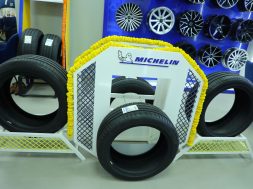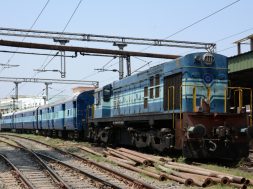Ready-mix concrete: successfully mixing demand with expectation
RMC is beginning to find its increasing application in India. Anticipating huge potential for RMC market, several companies like ACC, L&T, India Cements, and Madras Cements are strengthening their position into the RMC business.From the first commercial RMC plant set-up in 1993 to the present state-of-the-art plants, it has been an eventful journey for the industry.- Ajay Karambelkar, AGM Sales, Aquarius Engineers Pvt. Ltd.
Ready-mix concrete (RMC) refers to a specifically manufactured concrete for delivery to the customer’s construction site in a freshly mixed and plastic or unhardened state. Concrete itself is a mixture of Portland cement, water and aggregates comprising sand and gravel or crushed stone. In traditional work sites, each of these materials is procured separately and mixed in specified proportions at site to make concrete.
The demand is being essentially led by requirement of customised concrete based on diverse construction requirement. However, the requirement of RMC by the construction industry in parallel is led by growth of crammed job site areas, putting restriction on deployment of concrete preparation equipment. This in turn has necessitated concrete to be prepared at a distant location and get it delivered at the construction site preserving the quality. While talking about growth drivers of the industry, Ajay Karambelkar, AGM Sales, Aquarius Engineers Pvt. Ltd. said, “The government incentives, increase in housing and real estate development, suitable local government regulations, competitive RMC pricing, awareness of the advantages of using good quality concrete, use in infrastructure projects, etc. are the growth drivers for this industry.”
Mr Karambelkar believes that there is a very good scope for the increase of RMC in Tier-II and -III cities too. The housing and real estate development growth has shifted presently to these cities and offers a good scope for RMC.
Recent trendsIn advanced countries, RMC industry consumes 75 per cent of the cement produced, whereas in India only 5 per cent of the cement produced is being used by RMC producers. Hence, there is a very good potential for RMC in India. With the big infrastructure projects slowly turning to RMC, experts in this segment have predicted a good business growth in India.
Mr Karambelkar explained, “From the first commercial RMC plant set-up in 1993 to the present state-of-the-art plants, it has been an eventful journey for the industry. The residential and commercial building segment, which has been the major market segment for RMC till now, is seeing a slowdown. This has definitely affected the RMC industry as well as the RMC equipment sector.”
Production of RMCProduction and delivery of RMC is based on certain production standards in the value chain. The preparation and delivery of concrete both happen either through a batching plant or the truck mixers as per the construction requirement. The RMC prepared and delivered at the job site is subsequently delivered to the end-consumption point in the construction site through truck-mounted concrete boom pumps. In transit-mixed concrete (also called truck mixed or dry batched), all of the raw ingredients are charged directly in the truck mixer. The mixer drum is turned at charging (fast) speed during the loading of the materials.
There are three options for truck mixed concrete: concrete mixing at the job site, concrete mixing at the yard and concrete mixing during transit.
Concrete mixed at job site: While travelling to the job site, the drum is turned at agitating speed (slow speed). After arriving at the job site, the concrete is completely mixed. The drum is then turned for 70 to 100 revolutions or about 5 minutes at mixing speed.
Concrete mixed in yard: The drum is turned at high speed or 12-15 rpm for 50 revolutions. This allows a quick check of the batch. The concrete is then agitated slowly while driving to the job site.
Concrete mixed in transit: The drum is turned at medium speed or about 8 rpm for 70 revolutions while driving to the job site. The drum is then slowed to agitating speed. There is also a mode of preparation of concrete through shrink-mix concrete. Concrete that is partially mixed in a plant mixer and then discharged into the drum of the truck mixer for completion of the mixing is called shrink-mixed concrete. Central mixing plants that include a stationary, plant-mounted mixer are often actually used to shrink mix or partially mix the concrete. The amount of mixing that is needed in the truck mixer varies in these applications and should be determined via mixer uniformity tests. Generally, about 30 turns in the truck drum or about 2 minutes at mixing speed, is sufficient to completely mix shrink.Concrete mixing is also undertaken through central-mixed concrete system through central-mixing concrete batching plants. Central-mixing concrete batch plants include a stationary, plant-mounted mixer that mixes the concrete before it is discharged into a truck mixer. Central-mix plants are sometimes referred to as wet batch or pre-mix plants. The truck mixer is used primarily as an agitating haul unit at a central mix operation. Dump trucks or other non-agitating units are sometimes be used for low slump and mass concrete pours supplied by central mix plants. The advantages of central-mixing concrete involve faster production capability than a transit mix plant, improved concrete quality control and consistency. The advantage also includes reduced wear on the truck mixer drums.
Concrete batch plants come in a variety of styles and configurations designed to accommodate a variety of markets, technical and environmental considerations. There are two kinds of mobile concrete batching plants: one is the stationary and other one is portable or mobile. In general, mobile plants or portable plants have a cement silo and an overhead bin for sand or one- or two-coarse aggregates. Permanent or stationary plant operates from same location for a relatively long time. Large quantities of materials of greater variety are stored at the plant. The plant will tend to have larger overhead storage and may have two lanes to permit batching two trucks at the same time.
Newer equipmentThe total process in the use of RMC comprises of three essential stages: mixing, conveying and placement. Every stage requires specific equipment based on the parameters like quantum of concrete, location, automation required, and site requirements.
According to Mr Karambelkar, the custom designed, automated plants have huge demand in the market. He elaborated, “The advanced features in the equipment are now considered a necessity for the success of the RMC project.”
A new trend in preparation of RMC is also getting acceptance. This involves truck-mounted mobile mixers, known as “mix mobile” which are truck-mounted, volumetric batching and continuous mixing units. These “plants-on-wheels” often supply small-volume or specially pours and offer the convenience of freshly mixed concrete in fairly precise quantities. However, the equipment and the concept are yet to catch up in India. The slurry mixer is also a relative newcomer to concrete mixing technology. It can be added onto a dry-batch plant and works by mixing cement and water that is then loaded as slurry into a truck mixer along with the aggregates. It is reported to benefit from high-energy mixing. Another advantage is that the slurry mixer reduces the amount of cement dust that escapes into the air. However, the concept is much novice in India as well.
There are a host of benefits for using RMC concrete, including:• A centralised concrete batching plant can serve a wide area. The plants are zoned for industrial use and yet the delivery trucks can service residential districts or inner cities.• Better quality concrete is produced.• Elimination of storage space for basic materials at site.• Elimination of procurement and hiring of plant and machinery.• Wastage of basic materials is avoided. Labour associated with production of concrete is eliminated.• Time required is greatly reduced. Above all noise and dust pollution at site is reduced.
Taking into account the range of advantages of RMC, contractors can make efficient use of the equipment in preparation of RMC by thoroughly evaluating the construction concrete requirements along with the available space in the site. Issues like distance from the main construction site from the RMC preparation point should also be taken into account.
12
Cookie Consent
We use cookies to personalize your experience. By continuing to visit this website you agree to our Terms & Conditions, Privacy Policy and Cookie Policy.









